Robin Hood and the Merry Men — Criminally fun
![]()
-
Robin Hood and The Merry Men is the third major release from Macedonian publisher Final Frontier Games. In our reviews for their previous titles, Cavern Tavern and Rise to Nobility, we called out the exceptionally high build quality, excellent artwork and fantastic thematic links. Robin Hood continues these themes, with a focus on worker placement and a competitive, cooperative aspect that sees The Merry Men (and women) competing to disrupt the plans of King John and the evil Sheriff of Nottingham as they rob from the rich and — apparently — give to the poor.
Anyone who has played Rise to Nobility will likely recall that it’s somewhere between mid and heavy in terms of weight, with quite a few different ways to score that can lead to some hard decisions about long-term strategy. Robin Hood continues this theme by offering players a mixture of choices about where to place their workers, including both low-value (but safe) options and riskier but more rewarding ones. There is also the shared jeopardy that The Sheriff and Prince John introduce, which can lead to some instant-loss conditions.
Ultimately, the winner in a game of Robin Hood will be the player who scores the most victory points. There are many ways to do this that won’t be immediately clear to you now, but as I walk you through the mechanics of the game, things will fall into place.
The first way to score points you will likely become aware of is by playing cards in a passive manner. This means placing them to the right of your player board, excluding them from the game — and that on the turn you play that card, you’ll need to take a weaker or basic action. I’ll explain more about this later as well since, fundamentally, Robin Hood is a card-driven game.
You can also get points for setting traps for Prince John’s guards and placing barricades that stop The Sheriff’s tax-collection wagons. It’s also possible to score points simply for sending men to support Richard the Lionheart in his Crusade, which is a bonus that is also affected by your position on the reputation track. The amount of support you pledge to King Richard also affects how many of the king’s missions you can complete, which are also worth points. This isn’t an exhaustive list of ways to score by any means, but it’s also worth noting that you’ll lose points for any prisoners held by Prince John, so there’s a balance between, say, ransoming guards for points versus attempting to exchange them for captive allies.
Just by describing about half of the ways you can score in Robin Hood, I already feel as though I have likely overwhelmed some people with the complexity of the game, but it’s actually fairly logical to play once you’ve had a few turns. By combining card-driven actions with a busy board and some complex decisions about where to place workers, I’d say that Robin Hood is mostly going to appeal to more experienced players, but I’m also hopeful that the attractive, familiar theme might make this the game that many players choose to take the next step into more complex modern board games with.
That said, let’s talk about what you’ll actually be doing in the game in a bit more detail. No matter how little I write here, I think this will be quite a lengthy section — and yet I’ll also need to leave out whole swathes of rules and minor details, thanks again to just how much is going on in Robin Hood.
Starting with the basic concepts, each player turn comprises two key phases, the first of which is the placement of workers (The Merry Men) and the second being the use of their own personal hero, with the roster including Robin Hood, Maid Marion, Little John and so on.
Whilst Merry-Men and hero actions work in similar ways, the hero phase is quicker and usually more powerful, with heroes being more effective at basic actions, as well as having access to unique actions that Merry Men simply can’t perform. For example, a hero can visit the prison to rescue captive allies, or they can take part in an archery tournament (which is similar to robbing from the rich), but unlike when Merry Men take the robbing action, heroes can’t be arrested if they fail.
All of this will make a lot more sense if I provide some examples of basic actions, which in the case of the Merry Men are driven by which card you place on which side of the board. You place active cards onto the left side of the player board and each of these has a couple of bonuses to basic actions. As an example, a card might allow a Merry-Men meeple to gain a bonus resource at the normal gathering location for wood or it might provide a discount to building a trap for one of Prince John’s guards.
If played to the right-hand side of the player board, a card is considered passive, meaning that you can place a Merry-Men meeple anywhere, but it will receive no bonus to the basic action at that location. Cards on the passive side of the board at the end of the game will be worth points, as shown on their face. Some cards have no passive points bonus, so players will need to be taught that some cards simply aren’t worth playing passively unless there is absolutely no choice but to do so.
To understand the context of some of the actions I’ve mentioned, it’s important to understand what happens in the game in some of the other phases, including when The Sheriff, Guy of Gisborne and Prince John move around the map and begin to place their own guards to try to quell Robin Hood’s efforts to undermine them. This happens at the end of each player turn, when you draw a card from the villain deck and take the actions depicted on it.
There are several tracks leading to the castle, each of which has a fixed number of pennies on it (set by player count) and each has a carriage moving along it that collects taxes. There are also only a fixed number of hideout spaces at each gather location. As villain cards are drawn, taxes will be collected when the carriages reach their destination (depleting coins from each road) and guards will flood the hideout locations. If a track ever runs out of pennies, the players lose. Similarly, as guards overflow the gathering spots, they join a track to the left of the board. If this fills up, the players lose.
Why is this relevant? Well, simply put, building traps and barricades is what lets players catch guards and stop tax carriages respectively, with points (and valuable time) potentially gained for each. Building these things requires resources like wood and stone, whilst gathering weapons and distraction tokens (wine) can be used by heroes to either defeat guards openly or distract them to break into prison. Robin Hood demands a very fine balance between focusing purely on activities that will gain you points and doing things to maintain the status quo and keep the players in the game.
All of this boils down to a really tight game that is very demanding of players throughout. During early turns, it’s possible to make poor choices and fall a long way behind (both the other players and the villains, meaning they will overwhelm everyone before long) but it’s also possible to see a game reach its closing stages in nail-biting style. You can reach the last turn with some precarious outcomes hanging in the balance. For example, a well-barricaded road might still be depleted of pennies completely by an unlucky Prince John roll (since the Prince takes money directly from the stack. .
Assuming all the players are in a roughly equal position going into the last couple of rounds, this can lead to some seriously challenging decisions about whether to target an action that gains you victory points or do something dull and unrewarding like defeating guards, which will keep everyone in the game. This is a classic problem that most semi-cooperative games suffer from, but it’s also one that I think manages to be much more compelling here because of the thematic ties.
On that note, I find myself a little bit torn about how thematic Robin Hood feels. Robbing from the rich is just one of many actions, whilst giving to the poor is the one mechanic that lets a player reduce the guard track, which can signal doom if it ever fills up. Neither of these activities (which are core to the Robin Hood mythos) feel especially thematic or important, although both play their part in each and every game, as do collecting weapons, chopping wood and so on.
The theme comes through well in the artwork, which is penned by Mihajlo Dimitrievski — famous not only for Cavern Tavern and Rise to Nobility, but also for the West Kingdom series from Garphill Games. The characters (almost always in green) depict The Merry Men (and women) as you would expect them: a motley and cocky bunch of rogues, albeit with a touch of kindness here and there. The board itself is perhaps the real star of the show from a thematic perspective, depicting the castle and surrounding areas in intricate detail.
In addition to the semi-cooperative mode considered the ‘core’ experience, Robin Hood also includes a fully cooperative mode, which I only had chance to play once. I’m undecided on whether or not it is strictly better or worse than the semi-cooperative mode, but it’s certainly different. The tough choices about how to act are taken away, making Robin Hood feel much more like a Pandemic-style experience, which is certainly not a bad thing. There’s a solo mode as well, including a separate deck of cards. Whilst I haven’t tried it, the single-player variant in Rise to Nobility was very well featured and balanced, so I expect it will be here, as well.
If I were recommending games based on looks alone, Robin Hood would be among the very best of them, thanks to the superb art and incredible build quality, but sadly I don’t have that luxury. If I imagine playing Robin Hood as a completely themeless prototype with no artwork and just a series of tough choices, though, I think I still would have enjoyed it, thanks to how some of those exciting choices come to life in pure mechanical terms. Add these things together and Robin Hood becomes something quite special, assuming you have a gaming group with the experience required to understand it and persevere through what will be a tough first turn or two.
With a bit of streamlining and a good player aid (I see some already appearing on BGG) Robin Hood has the longevity to stick around for some time. If I am still playing it towards the end of 2019, I have a sneaking suspicion that it will appear in my ‘best of’ list. I really do like the complex questions it asks and the way in which the game can hang so finely in the balance. Some people might be overwhelmed by choice or complexity, and it might not be your thing if losing on the last die roll would infuriate you, but for me, it makes for a super-exciting experience that I keep wanting to go back to.
A copy of Robin Hood and the Merry Men was provided for review purposes. You can find out more about it on the website of publisher Final Frontier Games.
Love board games? Check out our list of the top board games we’ve reviewed.

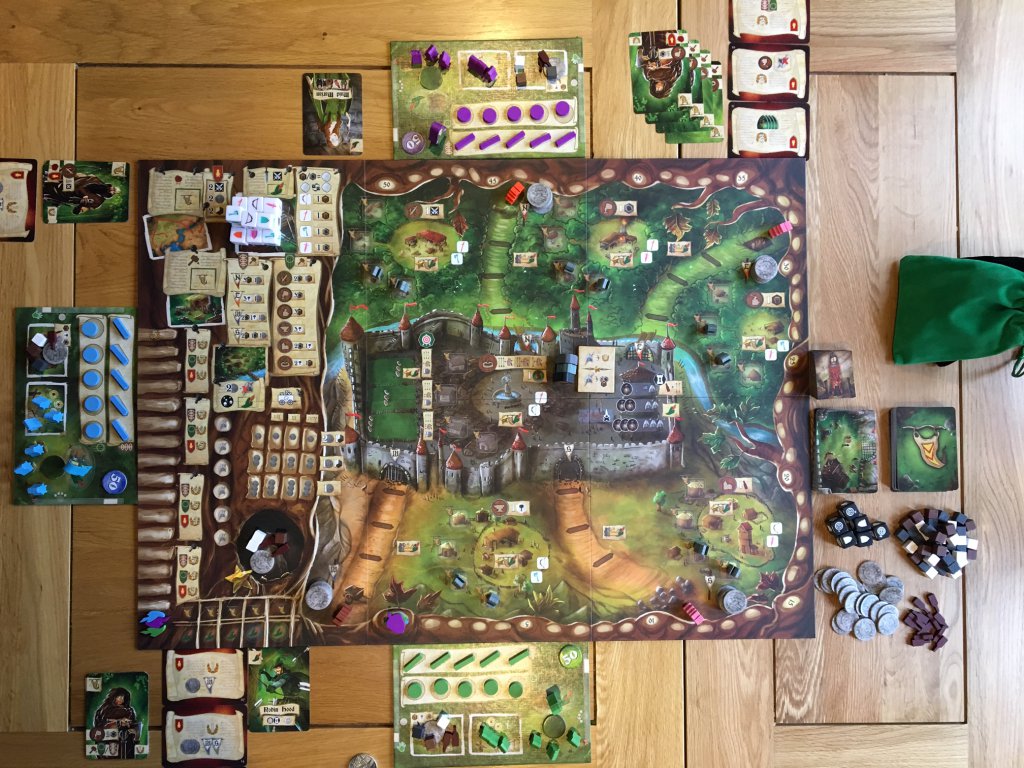
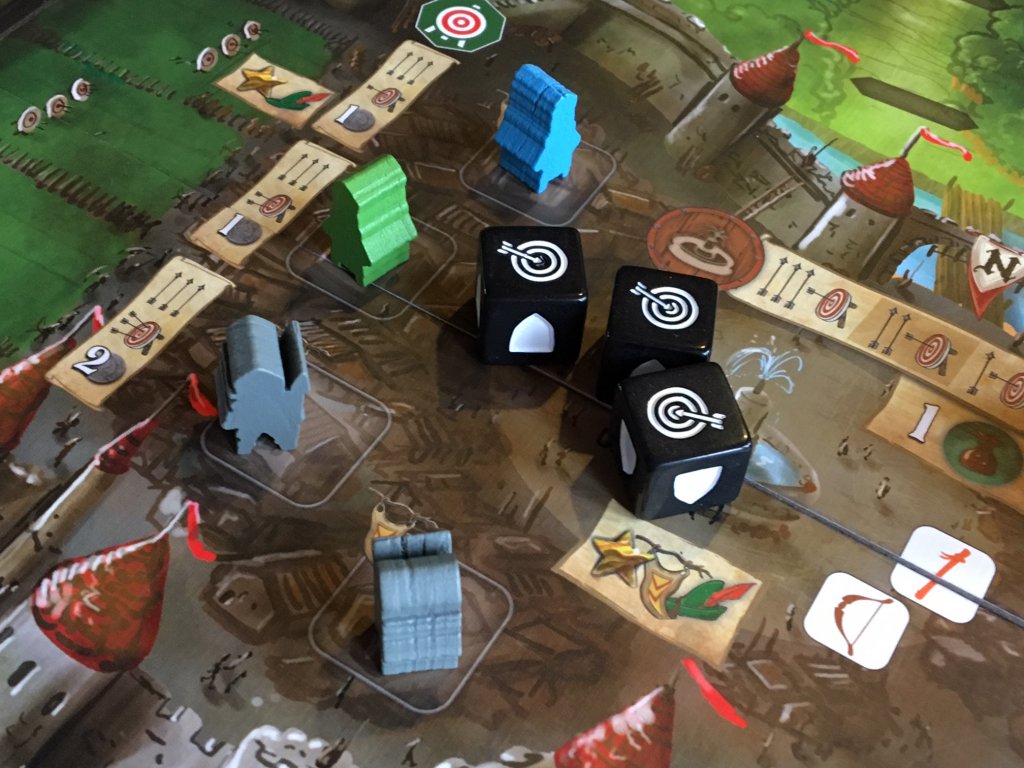
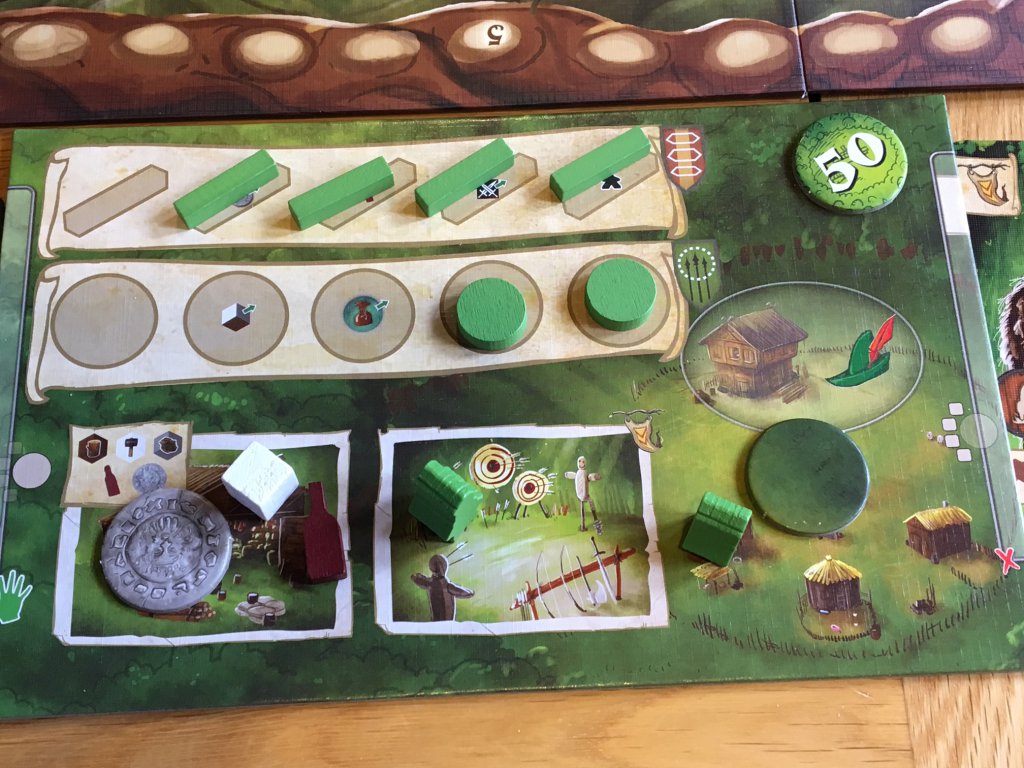
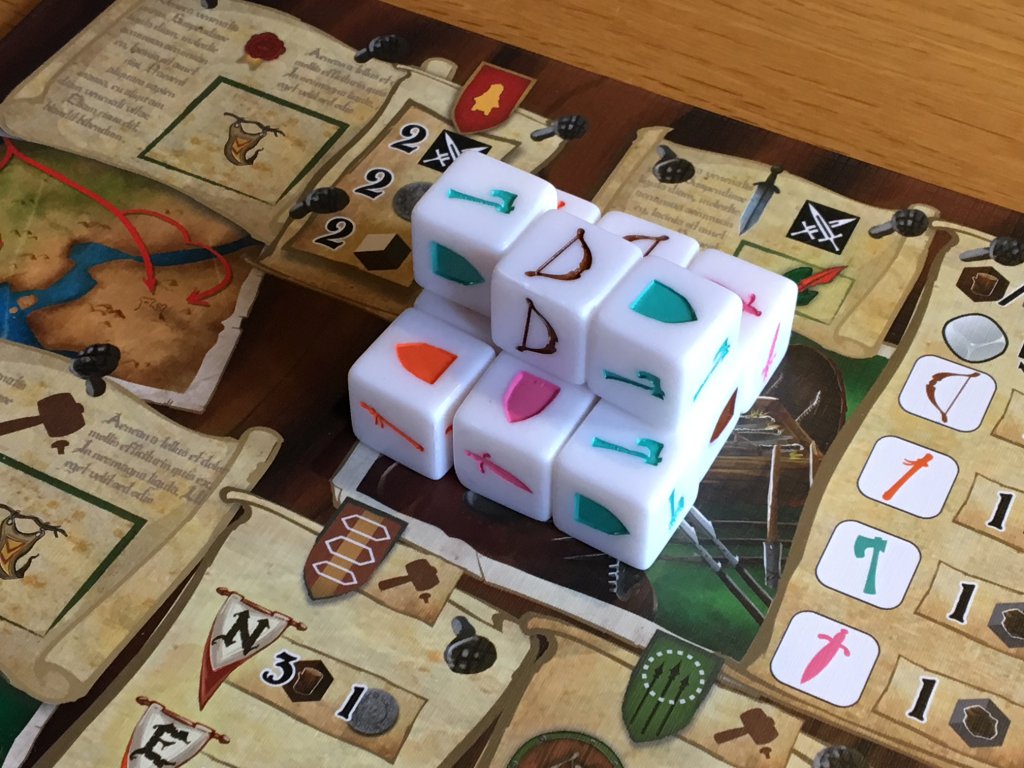
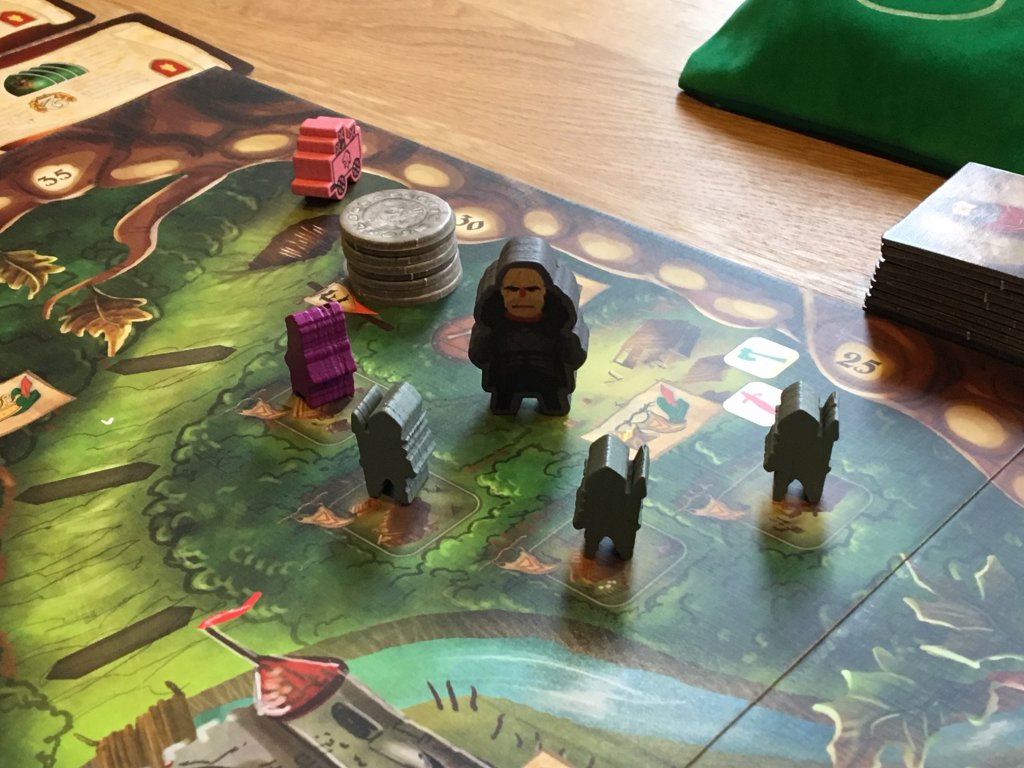
Comments are closed.